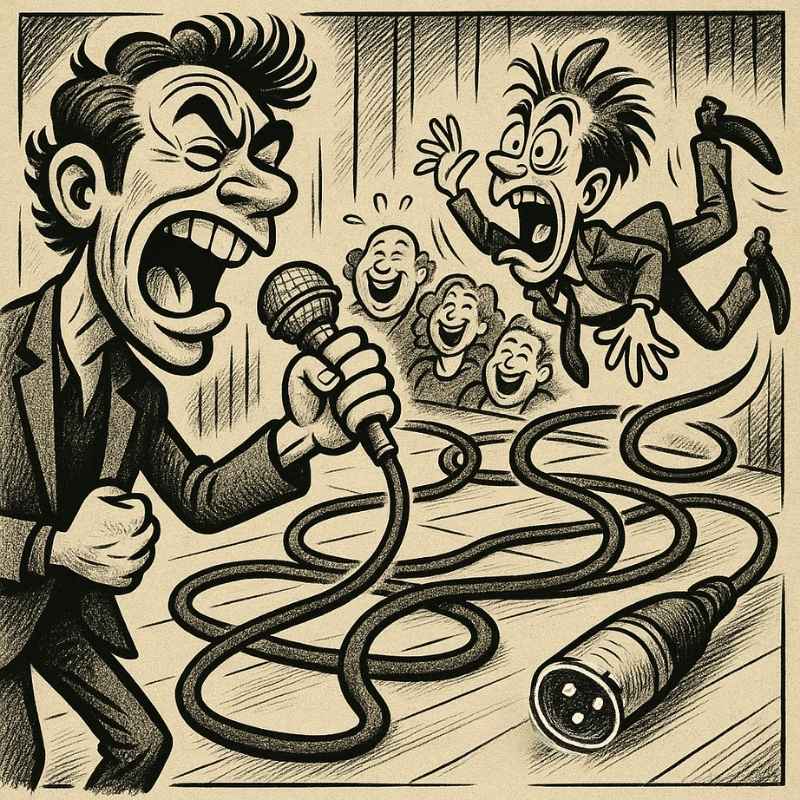🎤 What Is a Wireless XLR Mic System and How Does It Work?
Plug-On Wireless for XLR Explained
A wireless XLR mic system is basically the magic trick that frees any standard microphone from its cable. Instead of buying an all-in-one “wireless mic” (the karaoke-special with built-in transmitter), you get a little plug-on transmitter that clicks right into the XLR jack of your favorite microphone. The matching receiver then connects to your mixer, PA, or interface. Boom - your trusty mic is now wireless, without losing the character or comfort of the mic you already love.
Think of it like a wireless guitar system, but for vocalists, speakers, or podcasters. Plug in, power on, and suddenly that 25-foot XLR cable isn’t holding you hostage anymore.
Dynamic vs. Condenser – What Mics Work?
Here’s where it gets spicy: not every microphone plays nice with every wireless XLR system. Dynamic mics? Absolutely - they’re the best match. That’s why the CFG XL-aiR was purpose-built for dynamic microphones like the Shure SM58 or your favorite broadcast-style mic. They don’t need external power, and the system keeps things clean, simple, and bulletproof on stage.
Condenser microphones, though, are a different beast. Most need phantom power (48V), and not all wireless systems supply it. If you must use a condenser wirelessly, you’ll need to hunt down a usually-pricier system that supplies phantom power - but honestly, those can get complicated and introduce more failure points. For most performers, podcasters, and public speakers, sticking to dynamic mics with a solid UHF system is the no-brainer choice.

📶 Wireless Range, Reliability & Real-World Performance
How Far Can You Really Roam?
On paper, a lot of wireless systems brag about “300-foot range,” but here’s the truth: those numbers are tested in wide open parking lots with no cell phones, no Wi-Fi, no walls, and no drunk guy waving his phone flashlight at you in the crowd. In the real world, your range depends on line of sight, obstacles, and how crowded the wireless spectrum is.
The CFG XL-aiR clocks in at up to 165 feet (50 meters) of clean, tested range. That’s more than enough for most stages, churches, or outdoor setups. Walk around, work the crowd, or set up across the room - it holds up without cutting out.
UHF vs. 2.4GHz/5.8GHz – The Great Debate
This is where things get dicey. A ton of budget wireless systems run on 2.4GHz or 5.8GHz, the same bands used by Wi-Fi, Bluetooth, and basically every smart fridge in existence. That means you’re fighting with phones, routers, and laptops for signal space. Dropouts and lag are almost guaranteed once the venue fills with people.
UHF, on the other hand, was built for pro audio. It’s way less crowded, more resistant to interference, and delivers lower latency. That’s why the XL-aiR is a UHF system - you avoid the consumer junk traffic jam and get rock-solid stability. Plus, with 7 selectable channels, you can quickly dodge interference if another wireless user pops up.
Using Multiple Wireless Mics at Once
Need more than one? No problem. Since the XL-aiR gives you 7 channels to play with, you can run multiple units in the same space without stepping on each other’s toes. Just make sure each mic/receiver pair is on a different channel and you’re golden.
Antennas, Environments & Dropout Drama
Wireless isn’t magic - walls, metal trusses, and RF-heavy environments (big city downtowns, trade shows, festival stages) can still mess with your signal. A good rule of thumb: keep line of sight between transmitter and receiver whenever possible, avoid stacking gear right on top of the receiver, and always do a quick channel check before the show.
If you’re outdoors, UHF shines even brighter. Indoors, especially in places like convention halls or crowded sanctuaries, you’ll appreciate having multiple clean channels and the kind of stability that only UHF delivers.

🔊 Sound Quality, Latency & Audio Truths
Does Wireless Sound as Good as a Cable?
This is the first thing everybody asks, and honestly it used to be a fair concern. Early wireless systems could sound compressed, noisy, or flat compared to a direct XLR cable. But with modern UHF tech, you’re not losing anything. The CFG XL-aiR keeps a full 20Hz–20kHz frequency response and a >106dB signal-to-noise ratio, which basically means your wireless mic sounds just as fat, clear, and detailed as it does plugged in. In blind tests, most people can’t tell the difference.
Latency – Is There a Delay?
Latency is the sneaky killer in wireless audio. Even a tiny delay between your voice and what comes out of the speakers can throw you off mid-performance. Good news: UHF systems like the XL-aiR are designed for ultra-low latency that feels instantaneous. Compare that to some 2.4GHz budget systems, where the delay is noticeable in live situations. If you sing, speak, or beatbox on stage, this difference matters.
Noise, Static & Signal Loss
Nobody wants to hear snap, crackle, and pop in their vocal mix. Static and random cutouts usually happen when:
- Your wireless system is on a crowded frequency.
- The receiver is blocked by walls, racks, or bodies.
- You’re using a mic or cable that’s already faulty.
Troubleshooting is simple. Check your mic and XLR cable first, switch to a different channel, and make sure your receiver isn’t shoved behind the drummer’s cymbal bag. With a clean UHF channel and proper setup, you should get noise-free audio every time.

🔋 Battery Life, Power & Tech Specs That Matter
What’s the Battery Life Like?
Battery life can make or break a wireless system. Nobody wants to nail the first set only to have their mic cut out during the encore. Typical wireless XLR systems last anywhere from 3 to 5 hours on a charge, which is fine for short gigs but risky for anything longer. The CFG XL-aiR stretches that to a solid 6 hours of continuous use, giving you confidence for concerts, conferences, or marathon jam sessions. On top of that, it has an auto shut-off feature that powers the units down after 30 minutes of inactivity, so you never waste juice when you forget to turn them off between sets.
Charging, Power Options & Battery Monitoring
Both the transmitter and receiver run on built-in rechargeable Li-ion batteries, charged through a USB-C splitter cable that comes in the box. It takes about 2 hours for a full recharge, and you can top up with any standard 5V/1A charger. (Avoid using high-wattage smartphone fast chargers unless you want to risk voiding the warranty.)
As for battery status, most modern systems, including the XL-aiR, give you clear LED indicators so you can tell how much life is left. Pro tip: always charge your units the night before a gig, and keep a USB power bank in your gig bag just in case.
Setup & Pairing Simplicity
Here’s the part that makes or breaks wireless for beginners. Some systems bury you in menus and pairing apps that feel more complicated than programming a VCR. The XL-aiR keeps it old-school simple: plug it into your mic, turn it on, and choose from 7 selectable UHF channels if you need to avoid interference. That’s it. No apps, no Wi-Fi, no firmware headaches. Out of the box, you can go from cable clutter to wireless freedom in under a minute.

🔌 Compatibility, Connections & Mixers
Will It Work With Your Gear?
One of the biggest worries with wireless adapters is whether they’ll play nice with your existing setup. The good news is that most mixers, audio interfaces, and PA systems with standard XLR inputs will accept the receiver without a problem. Since the CFG XL-aiR was designed specifically for dynamic microphones, you can use it with classics like the Shure SM58, Sennheiser e835, or even broadcast-style mics for podcasting.
The only limitation is phantom power. Because the XL-aiR does not provide it, condenser mics that require 48V are not supported. If you’re a condenser mic user, you’ll need either an external power solution or a different system, but for the majority of live performers and public speakers, dynamics are the workhorse anyway.
Transmitter & Receiver Pairing Rules
Wireless gear is not universal - transmitters and receivers are usually paired as a set. The XL-aiR is no exception. You can’t mix and match it with other brands’ receivers or transmitters, but the benefit is rock-solid reliability. Once paired, the system locks in on one of its 7 UHF channels, keeping your signal stable.
And don’t worry about the transmitter messing with the balance of your mic. It’s compact and lightweight (about 120 grams), so while it adds a little length, it doesn’t throw off the feel. If you’re used to handling a wired mic, the adjustment is minimal. Most performers forget it’s even there after a song or two.

🔐 Security, Safety & Legal Stuff
Do You Need Encryption or Secure Audio?
Most performers don’t need encrypted audio, but in corporate, government, or broadcast gigs, it can matter. High-end systems sometimes include digital encryption so no one can eavesdrop on your signal. The CFG XL-aiR doesn’t use encryption - and that’s by design. For live sound, podcasts, worship, and performances, what you need is stability, not spy-grade security. If you’re not broadcasting top-secret launch codes, you’ll be fine.
Legal Frequencies & International Use
Wireless isn’t just about what works - it’s also about what’s legal where you’re using it. Different countries regulate the frequencies that wireless systems can occupy. The XL-aiR runs in the 657–663 MHz UHF band, which is a solid choice for reliable performance in North America. If you’re touring internationally, it’s always smart to check local regulations so you don’t get hit with fines or end up in a dead zone.
For most players, speakers, and creators working in the U.S. or Canada, you’re good to go right out of the box.

🎯 Real-World Use Cases & Who This Gear Is For
When to Choose Wireless XLR Over a Wireless Handheld Mic
Here’s the thing: a lot of people confuse wireless mic systems with wireless microphones. A wireless handheld mic is a single-purpose tool - the mic and transmitter are built into one body, usually meant for karaoke or budget setups. A wireless XLR system, like the XL-aiR, is way more flexible. It turns any dynamic microphone you already own into a wireless rig. That means you keep the sound and feel of your favorite mic, but lose the leash of the XLR cable.
Great Scenarios for Wireless XLR Use
Wireless XLR systems shine in places where mobility, speed, and reliability matter. Some perfect fits for the XL-aiR include:
- Live vocal performance – move around the stage without worrying about stepping on cables.
- Public speaking & events – conferences, weddings, or rallies where clean presentation matters.
- Content creation & podcasting – record anywhere with your favorite mic, no cable clutter.
- ENG & videography – perfect for street interviews or film shoots where quick setups are key.
- Worship & sermons – big sanctuaries or mobile setups where cables become a nightmare.
- Instrument miking – works with XLR-connected drum mics, amps, or brass sections.
Basically, if you’d normally drag a 25-foot XLR across the floor, this saves you the mess.
Can You Use It for Instruments or DI Boxes?
Yes, with some limits. Since the XL-aiR works with dynamic microphones and XLR outputs, you can absolutely use it for miking amps, drums, or even DI boxes that don’t need phantom power. It won’t replace a wireless guitar system for instruments with 1/4" jacks, but for anything that outputs XLR without phantom requirements, you’re in business.

💸 Budget Battles – What You Get for the Money
Budget vs. Midrange vs. Pro Systems
Wireless XLR systems cover a wide price range, from cheap “Amazon special” adapters to serious pro touring rigs. The budget units, usually 2.4GHz, might sound fine in your bedroom, but throw them into a crowded venue and you’ll hear the ugly side of interference and lag. Midrange systems, like the CFG XL-aiR, hit the sweet spot: pro-level UHF stability, low latency, and 6 hours of battery life at a price that doesn’t require selling your backup guitar. High-end pro rigs exist too, often with digital encryption, phantom power for condensers, or rack-mounted receivers. They’re overkill for most players unless you’re touring stadiums.
When to Stick With a Wired Mic
Wireless is awesome, but let’s be real - sometimes a cable is still the better call. If you’re in the studio, tracking vocals where movement doesn’t matter, a wired XLR is bulletproof and has zero risk of dropouts. Same goes if you’re in a super high-RF environment where even UHF gets crowded. For everything else, a good UHF wireless rig covers 99% of situations.
Try-Before-You-Buy & Support
Some audio shops and rental houses let you demo or rent wireless gear before committing. That can be a smart move if you’re new to wireless and want to test real-world performance. CFG backs the XL-aiR with warranty coverage and responsive support, which means you’re not left hanging if something goes wrong. Always worth considering - support can make the difference between a piece of gear you trust and one you avoid bringing to gigs.

🧠 Common Mistakes & Pro Tips
Rookie Errors You Can Avoid
Even the best wireless systems can seem flaky if you set them up wrong. The most common mistakes are:
- Blocking the receiver – if it’s buried behind gear or under a table, the signal suffers.
- Forgetting to charge – showing up with half a battery is asking for trouble.
- Wrong channel selection – two systems on the same frequency equals chaos.
- Using the wrong mic – trying to run a condenser that needs phantom power through a system designed for dynamics only.
Most of these are easily avoided with a little pre-gig ritual: charge everything, test your channel, and keep line of sight clear.
Is It Newbie Friendly?
Absolutely. Systems like the XL-aiR are designed to be plug-and-play. There are no apps, no confusing menus, no “firmware update required” messages mid-soundcheck. If you can plug in an XLR cable, you can run a wireless XLR system. That’s why they’re popular not just with pros but also with hobbyists, podcasters, and church volunteers.
Diagnosing Audio Gremlins
When something goes wrong, don’t panic. Here’s a quick checklist:
- Check the mic and cable first – a bad cable can trick you into blaming the wireless.
- Switch channels – interference is usually the culprit.
- Check battery status – low power can cause dropouts.
- Relocate the receiver – a few feet higher or further forward can make all the difference.
Most “wireless failures” aren’t failures at all, just setup oversights. A little troubleshooting know-how will keep you from throwing gear across the stage in frustration.

✅ Final Thoughts: Go Wireless Without the Worry
Wireless XLR systems are the secret weapon for singers, speakers, and creators who want the freedom to move without the leash of a cable. They let you keep the microphone you already love while cutting out the clutter on stage or in the studio.
The key is knowing what you’re getting. Dynamic mics? Perfect match. UHF instead of crowded 2.4GHz/5.8GHz? Huge win for reliability. Enough battery life to make it through a gig? Non-negotiable.
That’s exactly why we built the CFG XL-aiR Wireless XLR Mic System: rock-solid UHF transmission, 165-foot tested range, 6 hours of battery life, auto shut-off to save juice, and plug-and-play simplicity that even a first-timer can master in seconds. No apps, no nonsense, no compromises.
👉 Ready to ditch the cable and upgrade your setup?
Check out the XL-aiR Wireless XLR Mic System and see why performers, podcasters, and event pros are calling it one of the smartest pieces of gear they’ve ever added to their bag.






